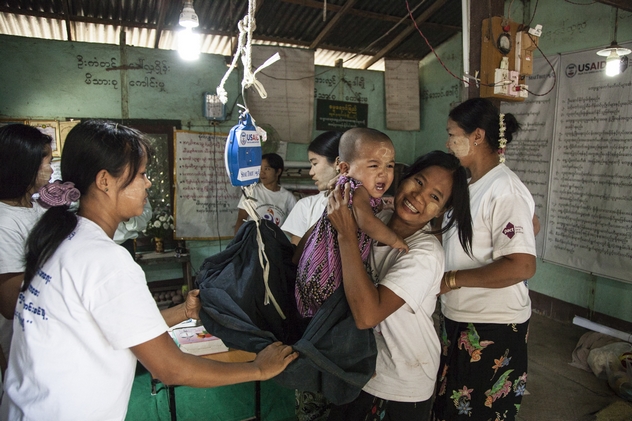Despite the latest improvements, malaria is still a killer disease. In Myanmar Cesvi fights malaria with mobile clinics.
In 2015 there were 214 million cases of malaria, with 438,000 deaths. Half the world population is at risk, even though the mortality rate has decreased by 60% between 2000 and 2015.
Accordingly to the WHO – World Health Organization, Southeast Asia is one of the most affected areas and specifically the most number of cases converge in these three countries – India, Indonesia and Myanmar.
Cesvi was the first Italian NGO authorised to operate in Myanmar, where it has been working since 2001. Malaria is a priority issue in the country. 16% of the population – numbering 53,4 million in all – live in high transmission risk areas, where every 1,000 people more than one case is recorded. The most vulnerable groups are children under 5 years old and pregnant women, communities living and working in the forests, migrant worker, ethnic minorities and those living in rural areas with difficult access to proper healthcare.
In 2011 Cesvi launched a program aimed at preventing and curing malaria in Mandalay, Northern Shan State and Kachin regions. Cesvi reaches some remote villages in 10 different districts thanks to mobile clinics: health workers along with a doctor and a nurse carry drug therapy, bed nets and informative leaflets on prevention that are distributed to the population. With these mobile clinics, that often are just motorbikes, Cesvi covers 1,058 villages, providing healthcare to some 430,000 people in these remote areas that are usually difficult to reach.
“Myanmar is changing. In the last few years we have witnessed the first hesitant reforms and now the country seems ready to leave behind it almost 50 years of military regime. Despite the ongoing development, the challenges we have to face to defeat malaria are many. Cesvi promotes a community approach on the issue – the project favours the set-up of ‘Village Development Committees’. Volunteers are enrolled among the neighbourhood – people from 20 to 30 years old, who after being trained, are ready to assist the population by spotting suspect malaria cases that will be later treated by Cesvi medical staff”,declares Giangi Milesi, Cesvi President.
The program activities focus on a three-pronged approach: prevention, employing low cost measures like bed-nets and informative and awareness meetings; disease control, through early diagnosis and treatment. Between 2011 and 2015, 120,075 preventive tests were taken and 12,000 people received proper drug therapy. Cesvi also offers structured training to voluntary health workers so that they are always updated and skilled to correctly diagnose malaria and treat it, administering the drug therapy in accordance with Malaria National Guidelines.
In 2015 Cesvi mobile clinics carried out 408 health visits and gave health guiding to about 30,000 people. Cesvi provided health assistance to more than 15,000 people.
Cover photo: Chiara Luxardo
